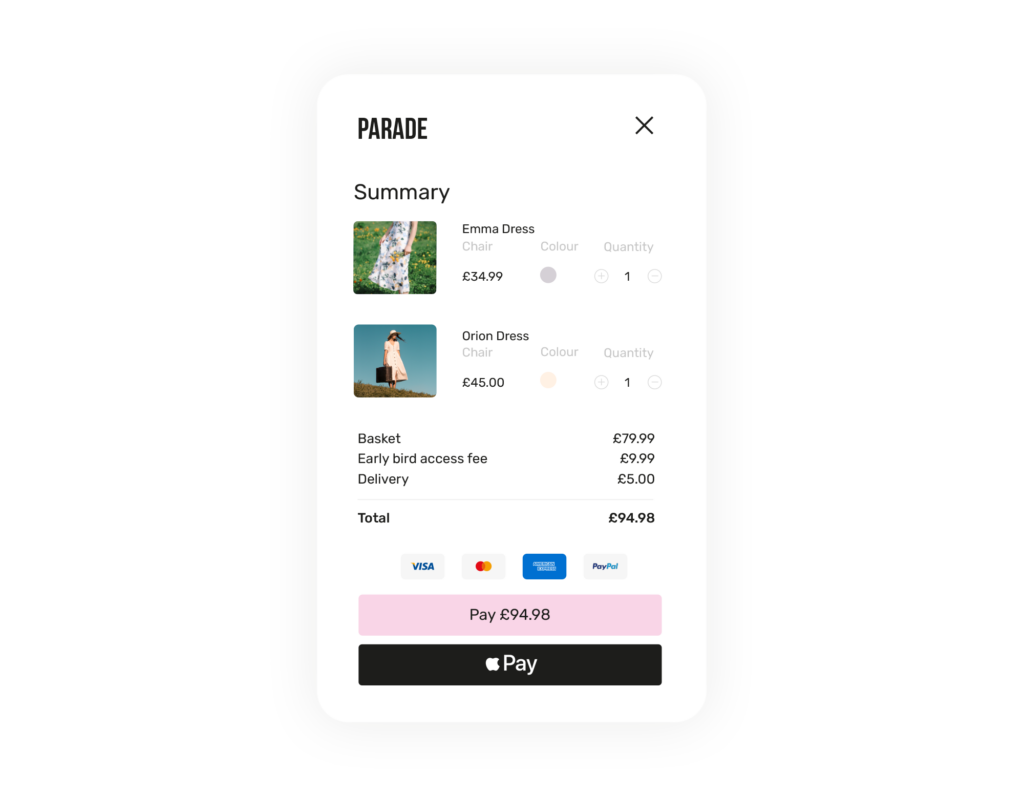
Consider this. Would you entrust your credit card details to anyone you encounter on the street? No, you wouldn’t… Well, you shouldn’t. Now, imagine you're in the market for a new tablet. Would you choose a reputable, well-known brand or take a chance on a newcomer? Most people would opt for the established brand, right?
Here's my point: when it comes to sharing sensitive information or spending our hard-earned money, trust is paramount. And in the world of e-commerce, where the internet is rife with fraud, trust becomes even more crucial.
Simply put, without building customer trust, your e-commerce business will struggle to make sales. Whether you're a savvy entrepreneur seeking to pivot your business or an established online store owner looking to attract new customers and foster loyalty, this compact guide is tailored precisely to your needs. Get ready to be armed with the steps you need to take to build trust and loyalty with your online customers.
But first, why is it important to build trust with customers?
According to the 2023 Edelman Trust Barometer, 79% of Gen Z say it’s more important than ever to trust a brand. This is pretty significant as 68% of ALL consumers say it’s Gen Z that influences where and how they shop.
But what exactly is it that will build that all important customer trust? We can split it up into three categories :
If you’re not doing these things, don’t worry, you’re in the right place. Let’s dive into the best ways you can gain customer trust:
Past research highlights that establishing trust with consumers is heavily influenced by customer experience (CX). The top two reasons for customers trusting a brand were:
So, how do you do this?
Simplify processes:
Ensure that your website is user-friendly, featuring clear and logical categorisation to make product discovery easy. Streamline the checkout process by minimising the information customers need to enter and presenting shipping and payment options in a clear and concise manner.
Act on customer feedback:
Gaining an in-depth understanding of your customers is vital for long-term success. Engage with them on social media platforms to foster meaningful connections and show that you value their input. Actively listen to their feedback and leverage it to enhance the customer experience across all touchpoints, from the initial purchase to post-sales communications and delivery processes.

Be accessible:
Maintaining availability across multiple channels will go a long way, trust us! Clearly display your contact information, allowing customers to reach out to you effortlessly. Consider incorporating a customer service chatbot into your support system, as it can efficiently handle frequently asked questions, while seamlessly transitioning customers to a human representative when a personalised touch is required.
Remember, customer trust is earned through every touchpoint, and by valuing your customers' needs, your brand will flourish!
2. Utilise authentic social proof
Social proof is the bread and butter of running a successful e-commerce business. In a nutshell, it’s the idea that people will be influenced by the actions or opinions of others like them or people they see as credible, e.g. family and friends. You need to be able to reassure new customers that they can trust you because thousands of others already do. This can be shown in a number of ways:
Research from SurveyMonkey found that 82% of people trust the voice of customers over messaging from your brand! So, it’s a no-brainer to begin showcasing this if you’re not already. But, be mindful that this will only be effective if your social proof appears authentic. Red flags can be raised at the other end of the spectrum too; for example, SurveyMonkey also found that 74% of people think a product with lots of 4-star reviews is better than one with just a few 5-star reviews.
Ensure you’re coming across as authentic by:

All in all, social proof can be very persuasive, but only if it seems legit.
3. Prioritise building relationships
You’d have to be living under a rock to not realise customers expect a lot more from brands these days. Consumers don’t want brands to be a faceless entity they buy stuff from, they need to be able to form a genuine connection.
With this in mind, let’s run through what you can do to build better relationships with your customers.

Align your values
New research shows that 82% of shoppers buy from brands that share their values. What does your audience care about? The environment? Mindfulness? Current economical issues? Be proactive in showcasing your values and your actions behind it and encourage conversations to reiterate your standpoint on the topic.
Engage customers
Communications should be about more than just making a sale. Think outside the box and use the power of dominating social media platforms like Tik Tok and Instagram to create useful content that helps your target audience solve their pain points. Join in discussions about your brand, products or industry on social media to build a community, not just a customer base.
Reward loyalty
It takes two to keep a relationship going, and this is no different when it comes to you and your customer. Are you showing your appreciation when customers shop with you by offering rewards or future discounts? Do you have a loyalty program that gives them exclusive early access to new product releases? Show them your brand is worth staying with!
If you can step away from seeing customer interactions as simply transactional and regard them as a relationship that needs careful nurturing over time, you’re well on your way to being able to build long-lasting, trusting relationships.

4. Have a seamless checkout
There’s no greater test of trust than at that final point of purchase at checkout. The last thing you want is for a potential customer to be put off at the last minute and abandon their cart! With a worrying statistic of 69.99% as the average shopping cart abandonment rate in 2023, it’s clear a lot of businesses are missing the mark at this stage and need to make changes.
First, let’s quickly go through the top reasons for cart abandonment:
Think about all the missed revenue you could be profiting from if you solve these issues! While these things are always easier said than done, here’s how you can ensure your e-commerce business doesn’t fall victim to these stats:
5. Incorporate familiar trust seals
While we’re on the subject of trust seals, it’s worth us diving a little deeper into the importance of these. Even if your brand is just starting off, and relatively unknown, using well-known trust seals on your website allows the trust people have for those third parties to extend to you. It’s really a great way to simultaneously build trust while reducing cart abandonment rates.
There are a range of different seals you can employ:

Payment badges
By displaying recognisable brand logos of the payment methods you accept, such as Visa and Mastercard, you’ll easily gain the trust associated with these household names. Consider including digital wallets like PayPal, Apple Pay and Google Pay, as they’re currently one of the most popular alternative payment methods around.
Security certifications
These certifications serve as indicators that your website and checkout process are secure. They confirm to users that any information they submit will be encrypted, ensuring compliance with relevant regulations. Examples of security certifications include Norton, Symantec and TRUSTe.
Third-party endorsements
These seals act as significant trust signals as they require an application and review process. Obtaining seals from organisations like BBB, Google and Amazon can go a long way to adding credibility to your online shop.
Offers and guarantees
By showcasing badges that promise benefits like a money-back guarantee or free returns, you provide potential customers with that extra peace of mind to encourage them to make that all-important purchase at checkout.
Final thoughts
Before we wrap things up, let's take a moment to quickly recap the key takeaways from this blog:
It’s now over to you to put these tips to use. Remember, repeated sales and success simply comes down to that all important customer trust!
Fancy finding out how Total Processing can help? Get in touch today.